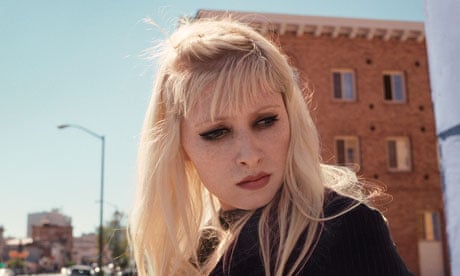Lise Sarfati is a French photographer who lived and worked in Russia for 10 years before relocating to California in 2003. To date, her subjects have tended to be adolescents and her colour portraits, which often resemble film stills, evoke the strange sense of suspended time between youth and adulthood. Sarfati's obsession with the inner lives of the young and dislocated is not, of itself, anything new: both Rene Dijkstra and Larry Clark have explored similar terrain. But Sarfati's photographs, though deceptively simple on first viewing, have a mysterious quality that is to do, in part, with her deft merging of portraiture, snapshot and arranged tableau.
As a teenager, she studied the films of Robert Bresson, Alain Resnais and the Russian documentary pioneer and film theorist, Dziga Vertov. Her work, she says, is as much influenced by film and by theoretical thinkers such as Julia Kristeva as by any photographic precursors. Sarfati, then, is a very French kind of conceptualist, but, since moving to America, she has sought out small-town communities in California, where the pace of life is slow and where she can take the time to familiarise herself with the people that subsequently become actors in her semi-choreographed still-life scenarios. She refers to them revealingly as "characters that might exist in a novel".
This exhibition, entitled She, follows on from her other American projects, which include The New Life (2003), Austin, Texas (2008) and On Hollywood (2010). It is set in a run-down area of Oakland, California and features two middle-aged women, Christine and Gina, in its small cast. They are sisters, as are Sloane and Sasha, Christine's daughters. In the exhibition's press release, Sarfati writes: "I like doubles, like mothers and daughters, or sisters or reflections. This represents my research into women's identities... I am interested in fixing that instability."
The notion of "instability" is a constant here, as are the behavioural fault lines and tremors that run like invisible currents though the generations. Of the four, Sloane is the most traditionally photogenic, and the one whose portraits most resemble film stills. One could easily imagine her haunting a David Lynch movie in the manner of Patricia Arquette in Lost Highway. Her sister, Sasha, appears only twice, and seems the most ill at ease with Sarfati's camera. When I walked around the show with Sarfati last week, she told me that all the women were difficult to photograph because they remained constantly suspicious of the camera's gaze, as well they might.
As always, Sarfati does not attempt to create a narrative strand, preferring, instead, to hint obliquely at the often dark undercurrents in her subjects' lives. Gina, like Sloane, can look like a different person from one portrait to the next, and her sexual identity, too, seems fluid. Christine comes across as someone who has lived life hard and fast and, in middle age, with two troubled teenage daughters, is living that way still. She is an erstwhile Jehovah's Witness turned dominatrix, whose ambition is to be a rock star.
In one striking image, she is wearing a wedding dress and veil, a reminder of a marriage that never happened. In another, she is pictured topless in the desert at dusk, her intense gaze looking into and beyond the camera. This is one of the few instances when Sarfati captures a subject head on, but, again, nothing is revealed here except Christine's otherness and her sense of isolation. What Sarfati seems to be aiming for is the capturing of a state of mind, one which is usually dislocated, daydreamy or preoccupied.
The photographs are given an extra layer of unrealness by Sarfati's use of Kodachrome slide film, which is more synonymous with family snapshots from the 1960s and 70s. There are echoes of William Eggleston's early colour images in some of her landscapes, but her work is all her own in its evocation of a certain kind of suspended, and insular, reality.
All four women live tough lives in an area where poverty is the norm, but, again, this is suggested rather than spelled out. Sarfati's US publisher, Jack Woody of Twin Palms books, recently said: "Lise sees in these women an incredible endurance, confronting their circumstances across the surfaces of the indifferent western landscape they have come to occupy," adding: "When I look at the women in her photos, I suspect in some way they are all self-portraits."
While all this may be true, it is not immediately apparent in the photographs, whose power lies in part in their elusiveness. Interestingly, Sarfati began taking photographs at 13, when she accompanied her mother, an academic who was then researching a novel on ageing, to the homes of old women who lived in big, eerily empty apartments in Nice. The camera may have provided her younger self with a way of dealing with these strange encounters. It also, as she said in a recent interview, "allowed me to create a fixed image that removed me from reality and allowed me to have a different relationship with the world". That would still seem to be the case, though the childlike wonder has been replaced by a more knowing gaze that may seem, at first encounter, to be blank and detached, but is anything but.

Comments (…)
Sign in or create your Guardian account to join the discussion